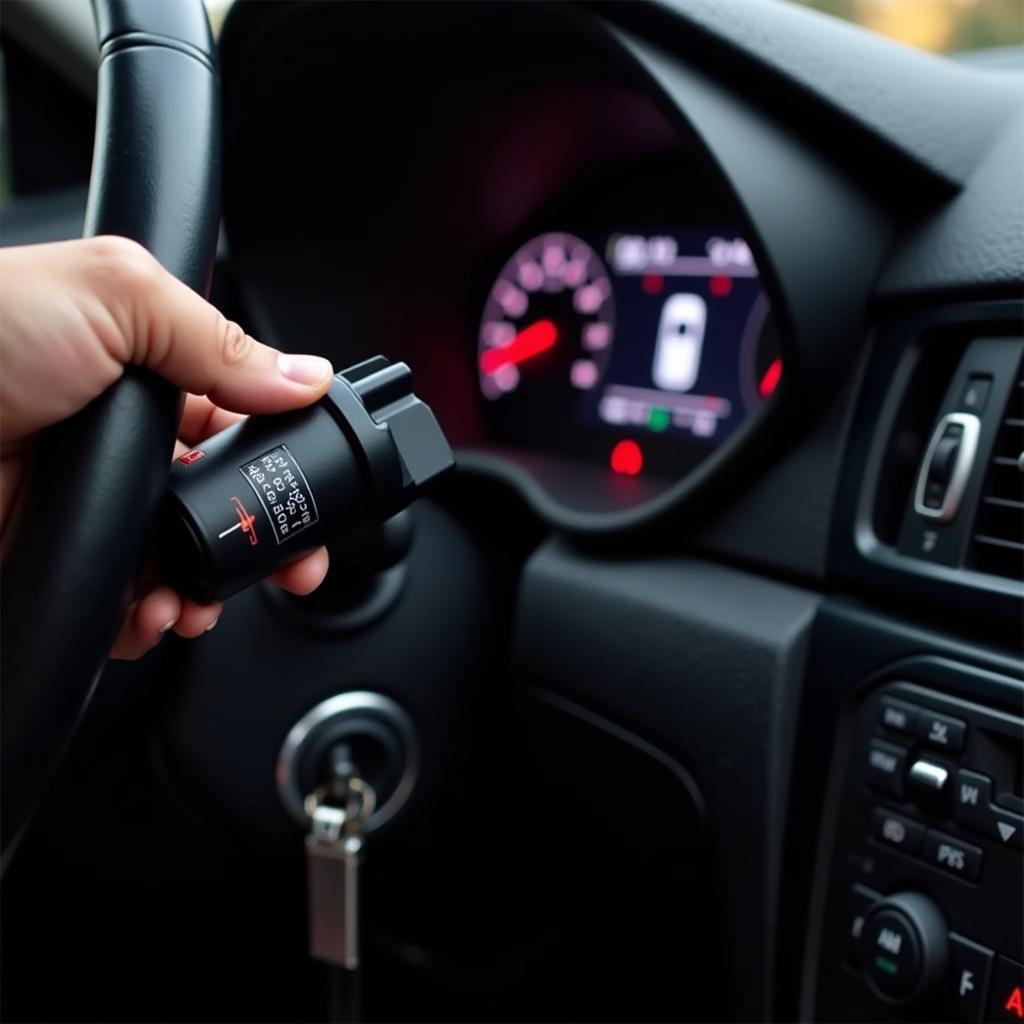Modern cars are complex machines, packed with sensors and computer systems. When something goes wrong, pinpointing the issue can feel like searching for a needle in a haystack. That’s where car diagnostic tools come in. These handy devices can help you understand what’s happening under the hood, but how difficult are they to actually use? This article will explore the different types of diagnostic tools available and break down the process, helping you determine whether you can DIY or need a professional. We’ll also discuss some common scenarios where a diagnostic tool can be invaluable. See our guide on how to do a diagnostic on a car.
Understanding Car Diagnostic Tools and Their Difficulty
Car diagnostic tools range from simple code readers to sophisticated professional scanners. The difficulty of using them depends largely on the tool itself and the depth of information you’re seeking. A basic code reader, for example, is relatively straightforward. It plugs into your car’s OBD-II port (usually located under the steering wheel) and displays diagnostic trouble codes (DTCs). These codes, while helpful, often only provide a general idea of the problem. More advanced tools, on the other hand, offer live data streams, allowing you to monitor sensor readings in real-time and perform more complex diagnostics. These tools can be more challenging to master, requiring a deeper understanding of automotive systems.
There are many different brands and models of diagnostic tools available, each with its own set of features and functionalities. Some are designed for specific makes and models of vehicles, while others are more universal. Choosing the right tool can be a key factor in determining how difficult it will be to use. Check out our review on the OldShark Mini ELM327 Bluetooth OBD2 V2.1 Car Diagnostic Tool.
 Using an OBD2 Scanner on a Car
Using an OBD2 Scanner on a Car
Factors Influencing the Difficulty of Using a Car Diagnostic Tool
Several factors can influence the difficulty of using a car diagnostic tool:
- Your Technical Skills: A basic understanding of car mechanics will make interpreting the data from a diagnostic tool much easier.
- The Type of Tool: Simple code readers are generally user-friendly, while professional-grade scanners require more expertise.
- The Vehicle’s Complexity: Modern cars have intricate systems, making diagnostics more challenging than older models.
- The Specific Problem: Some issues are easier to diagnose than others. A simple sensor fault might be straightforward, while a complex electrical problem could be much harder to pinpoint.
Common Uses for Car Diagnostic Tools
Diagnostic tools can be used for a wide range of tasks, including:
- Identifying Check Engine Light Causes: This is perhaps the most common use for a diagnostic tool.
- Monitoring Sensor Readings: This helps identify failing sensors or other issues affecting performance.
- Resetting Warning Lights: After a repair, a diagnostic tool can be used to reset the check engine light.
- Performing System Tests: Some tools allow you to test specific systems, like the ABS or airbags.
Do You Need a Professional?
While simple diagnostic tools can be used by DIYers, there are times when professional help is necessary. If you’re uncomfortable working on your car, or if the problem is complex, it’s always best to consult a qualified mechanic. They have the experience and expertise to interpret the data from a diagnostic tool accurately and recommend the appropriate repairs. For those in need of a diagnostic on the go, consider a call out car diagnostic.
Is a Car Diagnostic Tool Worth It?
Investing in a car diagnostic tool can be worthwhile, even for basic troubleshooting. It can save you time and money by helping you identify problems early on and avoid unnecessary trips to the mechanic. However, it’s important to choose a tool that aligns with your technical skills and diagnostic needs. Remember, a tool is only as good as the user’s ability to interpret the information it provides.
John Smith, a certified mechanic with over 20 years of experience, says, “A diagnostic tool can be an incredibly valuable asset for any car owner, but it’s crucial to choose the right one for your needs and skill level. Don’t be afraid to start with a simple code reader and gradually work your way up to more advanced tools as you gain experience.”
Conclusion
How difficult is it to use a car diagnostic tool? The answer depends on various factors. While basic code readers are user-friendly and suitable for DIY enthusiasts, more advanced tools require technical expertise. Understanding your needs and skill level will help you choose the right tool and determine whether you can tackle the diagnostic process yourself or require the assistance of a professional. Learn more about car diagnostic tool co za and see diagnostics images on broken cars.
FAQ
- What is an OBD-II port?
- What are diagnostic trouble codes (DTCs)?
- Can I reset my check engine light with a diagnostic tool?
- What are the different types of car diagnostic tools?
- How much does a car diagnostic tool cost?
- Do I need a specific diagnostic tool for my car make and model?
- What are the benefits of using a car diagnostic tool?
Need help with your car diagnostics? Contact us via WhatsApp: +1(641)206-8880 or Email: [email protected]. We offer 24/7 customer support.


